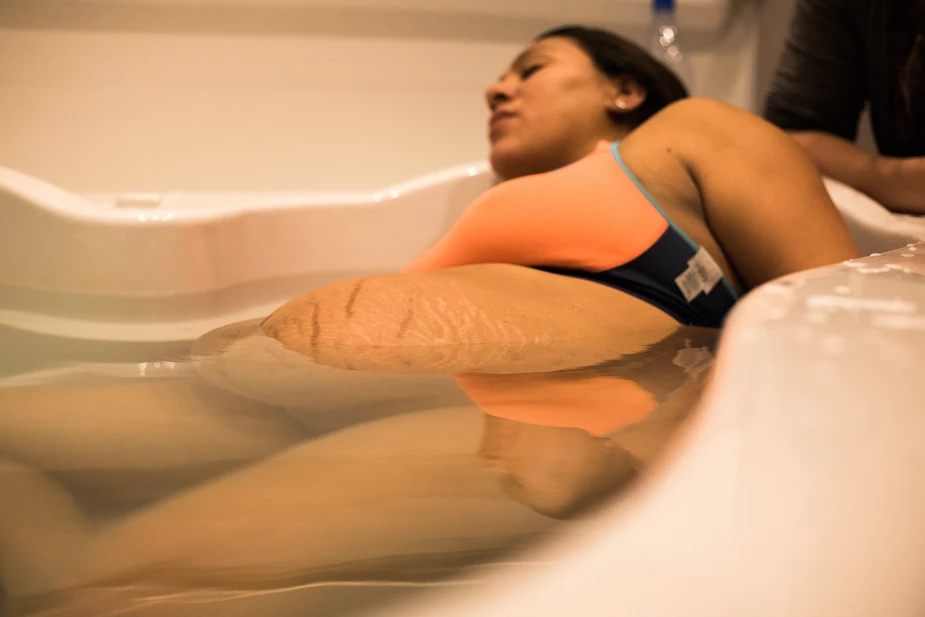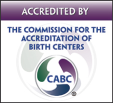Waterbirth: Why consider a waterbirth? Is it safe?
Desire for waterbirth is a common reason why families choose Sacred Roots for their birth experiences. Each of our birthing suites offers a large, jetted tub for hydrotherapy and waterbirth.
Hydrotherapy (the use of water in a tub or shower during labor) is very commonly used to provide comfort during labor and birth. There are many research studies that have been done supporting this use, and persons who use hydrotherapy at any point during their labor consistently report higher overall satisfaction with their birth experience. The vast majority of our clients use hydrotherapy at some point during their labor.
With waterbirth, the baby is born under the water. While many obstetricians and hospitals consider waterbirth to be experimental, midwives have been attending waterbirths for many decades. There are many well-done studies from midwives in all practice settings – home, birth center, hospital – proving the safety of waterbirth. As a general observation, physicians are not trained to do waterbirth, nor do they typically offer waterbirth, so they have not completed their own large studies to prove the safety of waterbirth and therefore continue to call it experimental.
There are criteria that we follow to ensure the safety of waterbirth. First of all, that the pregnant person is healthy with a normal, low-risk pregnancy. This is everyone who is admitted to the birth center. As a standard, we review waterbirth during the 36 week visit to ensure that all questions have been answered.
While a client is in the tub, we monitor the water temperature closely to ensure that is maintained close to body temperature. We don’t want it to be too cold when the baby is born, and if the temperature is too hot, it will cause the baby’s heart rate to rise.
When the baby is being born, we ensure the baby’s face remains under water until the baby has been fully born. Remember! The baby is still attached to the umbilical cord! This is how the baby continues to get oxygen. The baby has simply moved from being in water in the womb to water in the tub. Once the baby has been fully born, we gently bring the baby out of the water and up to skin to skin. The baby does not start breathing until their face touches the air.
IF the baby’s face happens to come out of the water before the baby has been fully born, we simply keep the baby’s face above the water and birth the rest of the body above the water. But not to worry! Babies do have a dive reflex. If they happen to get dipped, they will hold their breath – we just don’t like to test this reflex!
Water babies are often very calm and alert immediately following the birth. Many times they do not cry during their immediate transition – they breathe and look around safely nestled in their parent’s arms. They often take a minute longer for their skin to get pink because they are in a quiet alert state and not crying. It tends to be a very gentle way to enter the world. Of course, every birth and baby are different, and some arrive ready to sing their birth song!

We love attending waterbirths, and about 50-60% of our clients end up having waterbirths. But most of all, we love supporting families to achieve their birth visions. I like that we can just follow labor and birth as it plays out – the tub is always there.



